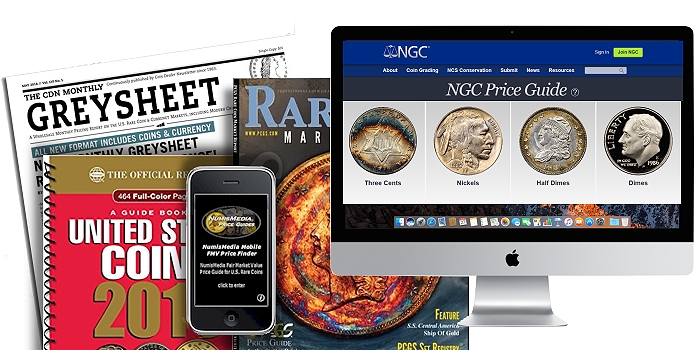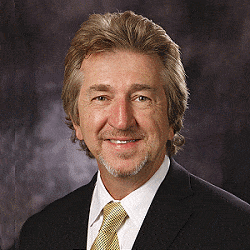
As technology makes information more accessible, including price guides and price discovery, the educated coin collector is the winner
By Jeff Garrett for Numismatic Guaranty Corporation (NGC) ……
Some of the oldest rare coin price guides for US coins began in the mid- to late 1800s. There was boom of collector interest in US coinage when the Mint stopped making Large Cents. A few of the great collections of the era were started at this time.
 Over the generations, rare coin price guides changed very little. Slowly, conditions became more of a factor in pricing, but with only one or two grades listed for most coins.
Over the generations, rare coin price guides changed very little. Slowly, conditions became more of a factor in pricing, but with only one or two grades listed for most coins.
In late 1946, the Guide Book of United States Coins (“Redbook”) was first published. This became the bible of numismatic pricing for the next 50 years or so. I remember times in the 1970s when dealers would not price coins in inventory until the latest edition of the Redbook was distributed. Most of my early knowledge of rare coins came from memorizing as much as possible of the Redbook.
A lot has changed in the last several years. There are a multitude of rare coin price guides to choose from. Instead of waiting for yearly pricing, collectors and dealers now demand up-to-the-minute information. Rare coin consumers want as much information as possible before making a purchase decision.
We now live in the information age, and coin collectors have been a huge beneficiary of this new trend. Because of the many price guides, auction records and population information, the hobby is now more transparent than ever before. In my opinion, this has been one of the biggest drivers for increased collector demand in the last 20 years.
Regardless of their budget, collectors want accurate pricing information before making a purchase. This may sound simple, but I can assure you it is not.
For one thing, rare coins are not commodities. Nearly every rare coin is different in appearance, even in the exact same grade. We have discussed this many times over the years. Eye appeal and general appearance can greatly impact the value of a coin. This is very hard to convey in price guides.
Most price guides list prices for the imaginary “average” coin for the grade. Therefore, actual coins can trade in a wide range based on appearance. This can be easily observed by attending any major rare coin auction.
There is also much discussion about what constitutes wholesale and retail prices for rare coins.
Many have a hard time defining exactly the term “retail” pricing. Because of the abundance of pricing information available to most retail collectors, the standard markups of times past are hard to sustain for most retail companies. I can safely state that there has been a huge blurring of the line between what is wholesale and what is retail in today’s marketplace.
Many consider price guides to be a big problem for the hobby. But in my opinion, it’s not much different than the pricing pressures nearly every retail company in the United States faces. Consumers can price-shop with a few clicks of their phone for everything from socks to automobiles. In the long run, this transparency will greatly increase volume for many players, but profit margins will continue to be squeezed. Rare coin consumers are the winner.
The landscape for rare coin price guides continues to evolve. NGC has maintained a price guide for years, and they continue to make improvements at a steady pace.
Recently, the long-running Coin Dealer Newsletter (Greysheet) has been going through a radical restructure and update. They have decided to eliminate the weekly sheets of years past, and publish a once-a-month newspaper, one for retail pricing and another with the standard wholesale prices they have published for decades. The new formats debuted last week during the Central States convention in Chicago. Reviews were mixed on the newspaper-style format, but in the long run I am confident they will produce a product the market will embrace.
Regardless of the price guides you use, understanding how coins are valued is very important to every dealer and collector. You can easily end up with coins that seem like incredible bargains in relation to price guides. If the coins are unattractive, you will be subject to steep price discounting when it comes time to liquidate.
I urge every collector to spend time learning to grade, and know for themselves how a coin should be valued in relation to its appearance.
There are now more tools than ever for the average or advanced collector. It is vital to understand how to use this deluge of information. Spend time studying the series you have chosen, and examine as many coins as possible before making a big decision.
Now is the best time in the history of the hobby for collectors to buy coins at the lowest possible markup. Use the information you have available to your fullest advantage.
* * *
Want to see more articles like this? Subscribe to the free NGC Weekly Market Report.




